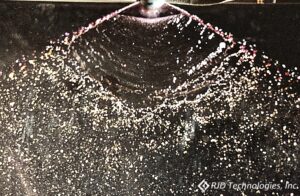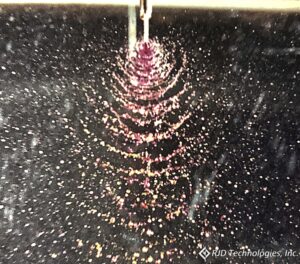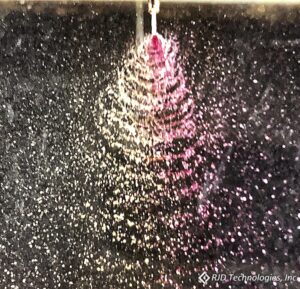Publications
Demyanovich, R.J.. 2023, Experimental study and turbulence dissipative scale modelling of the rapid micromixing of impinging, paper-thin sheets of liquids. ChemRxiv preprint server. 10.26434/chemrxiv-2023-xzp30
Demyanovich, R.J.. 2023, High energy dissipation rates from the impingement of free paper-thin sheets of liquids: Determination of the volume of the energy dissipation zone. ChemRxiv preprint server. 10.26434/chemrxiv-2023-d3z67-v2
Demyanovich, R.J.. 2021, High energy dissipation rates from the impingement of free paper-thin sheets of liquids: A study of the coefficient of restitution of the collision. Chemical Engineering Science: X 12:100113. https://doi.org/10.1016/j.cesx.2021.100113
Demyanovich, R.J., 2021, On the impingement of free, thin sheets of liquids – A photographic study of the impingement zone. AIP Adv. 11. https://doi.org/10.1063/5.0040336
Demyanovich, R.J., Bourne, J.R., 1992, Secondary mixing of Impinging Sheets. Chem. Eng. Commun. 113, 133-146. https://doi.org/10.1080/00986449208936008
Demyanovich, R.J., Bourne, J.R., 1992, Impingement-sheet mixing of liquids at unequal flow rates. Chem. Eng. Process. 31, 229-239. https://doi.org/10.1016/0255-2701(92)87015-9
Demyanovich, R.J., 1991, Production of commercial dyes via impingement-sheet mixing. Part II. Results of laboratory experiments. Chem. Eng. Process. 29, 179-183. https://doi.org/10.1016/0255-2701(91)85018-J
Demyanovich, R.J., 1991, Production of commercial dyes via impingement-sheet mixing. Part I. Testing of a device suitable for industrial application. Chem. Eng. Process. 29, 173-177. https://doi.org/10.1016/0255-2701(91)85017-I
Demyanovich, R.J., 1991, Absorption of carbon dioxide by impinging, thin liquid sheets. Chem. Eng. Commun. 103, 151-166. https://doi.org/10.1080/00986449108910868
Demyanovich, R.J., Bourne, J.R., 1989, Rapid micromixing by the impingement of thin liquid sheets. 2. Mixing study. Ind. Eng. Chem. Res. 28, 830-839. https://doi.org/10.1021/ie00090a027
Demyanovich, R.J., Bourne, J.R., 1989, Rapid micromixing by the impingement of thin liquid sheets. 1. A photographic study of the flow pattern. Ind. Eng. Chem. Res. 28, 825-830. https://doi.org/10.1021/ie00090a026



